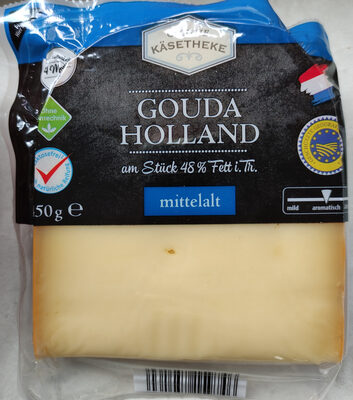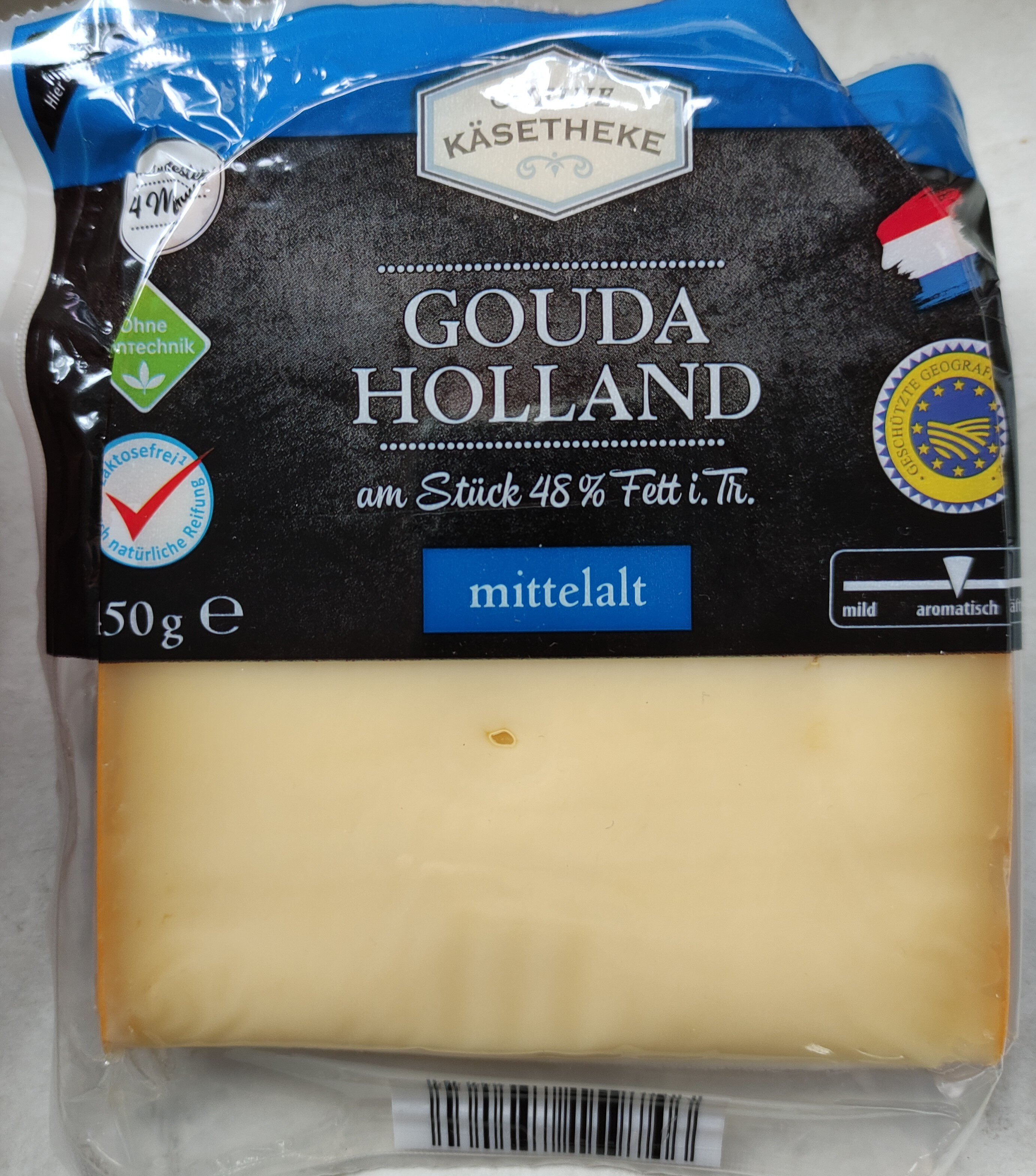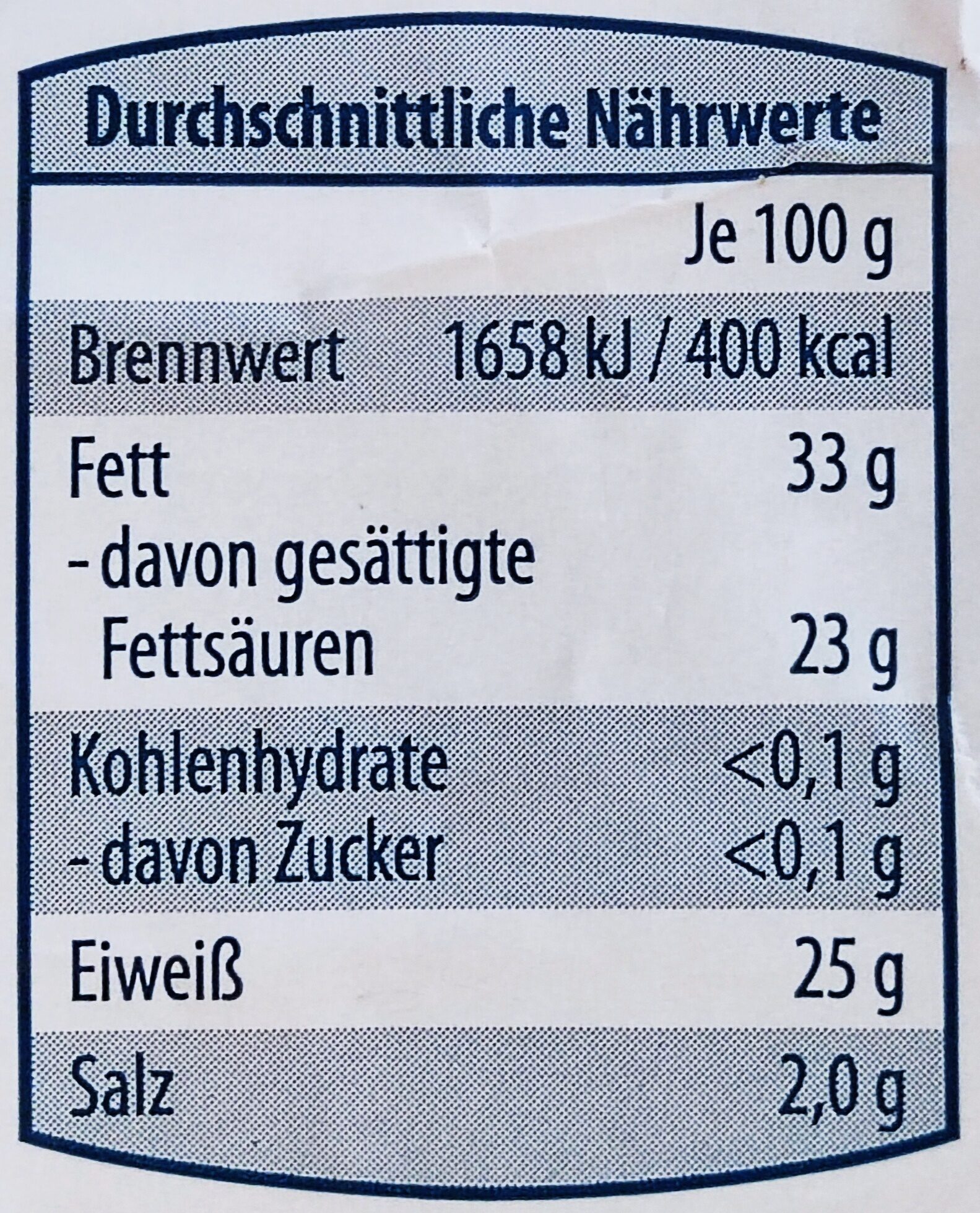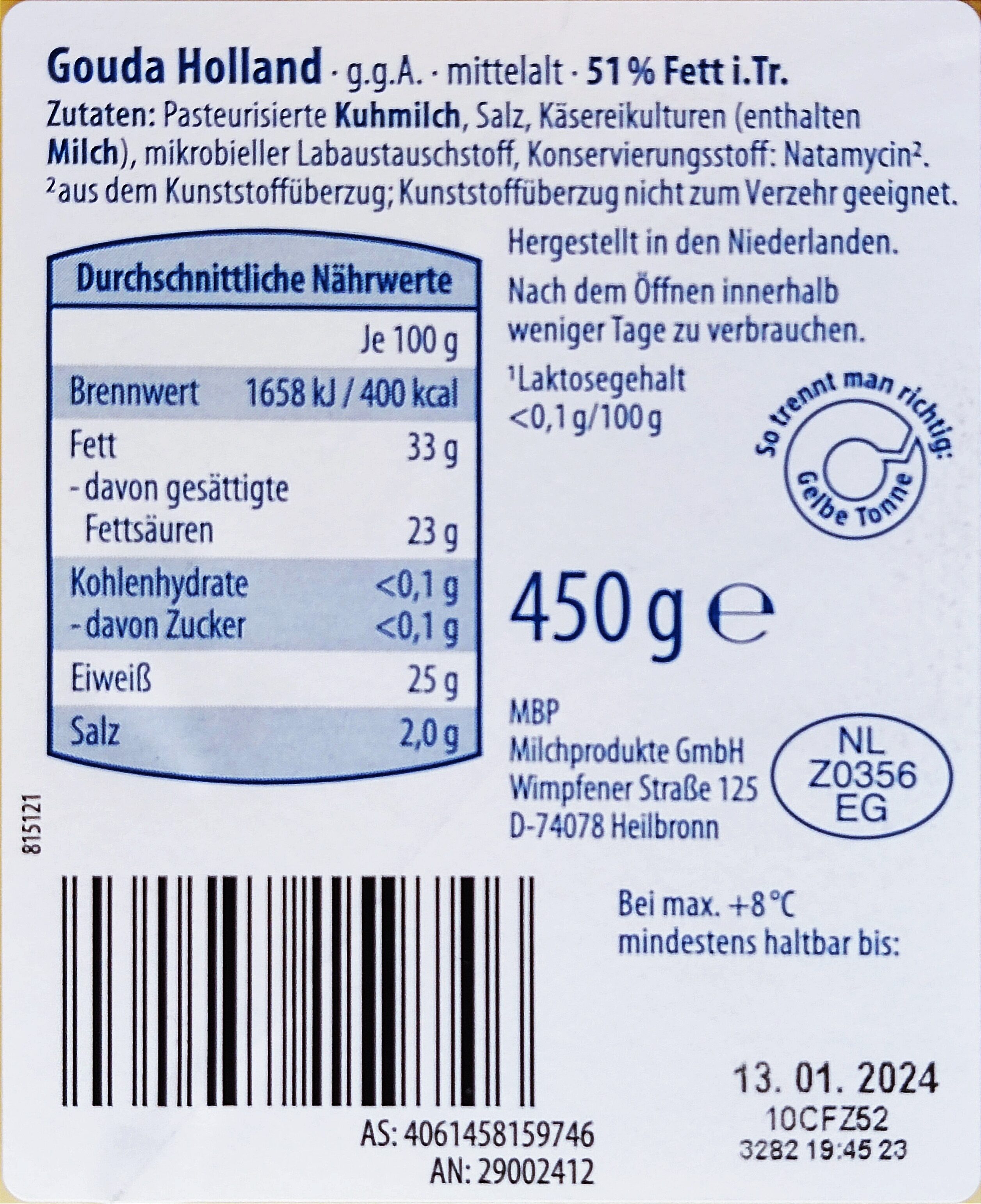Gouda Holland g.g.A. am Stück - Mittelalt - Meine Käsetheke - 450 g
This product page is not complete. You can help to complete it by editing it and adding more data from the photos we have, or by taking more photos using the app for Android or iPhone/iPad. Thank you!
×
Barcode: 4061458159746 (EAN / EAN-13)
Quantity: 450 g
Packaging: Plastic
Brands: Meine Käsetheke, MBP Milchprodukte, Aldi
Categories: Dairies, Fermented foods, Fermented milk products, Cheeses, Cow cheeses, Uncooked pressed cheeses, Cheeses of the Netherlands, Gouda, Matured Gouda
Labels, certifications, awards:
No GMOs, Ohne Gentechnik, No lactose, de:Hergestellt in den Niederlanden, de:Rinde nicht zum Verzehr geeignet
Traceability code: NL Z0356 EG
Stores: Aldi
Countries where sold: Germany
Matching with your preferences
Report a problem
Data sources
Product added on by kiliweb
Last edit of product page on by professordoc.
Product page also edited by alvemeere, ecoscore-impact-estimator, fabi2, lusthase, openfoodfacts-contributors, packbot, prepperapp, roboto-app, wrzr123, yuka.sY2b0xO6T85zoF3NwEKvlk8dQ9T4uyjvFCzvoW-Fx4rWLZL6YdJ_zojhF6s, yuka.sY2b0xO6T85zoF3NwEKvln1sCvnGmGP-BjDmxBeywuqjJLrVXOBCvYfRa6o.












